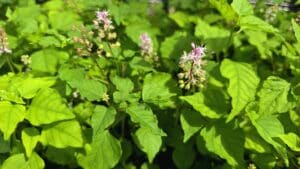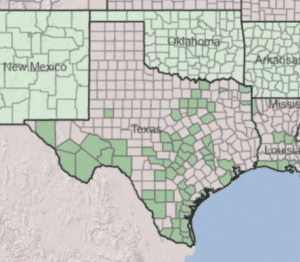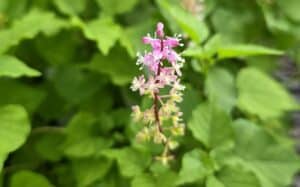Almost every garden has a trouble spot: that patch of ground where plants fade one after another. Too much shade. Soil that stays soggy after a deluge. Sometimes both. Most gardeners eventually give up. But there’s a Texas-tough plant that not only survives in these conditions but thrives through heat, drought, and freezing temps. Meet the pigeonberry (Rivina humilis).
Often overlooked in favor of flashier imports, pigeonberry deserves recognition as one of the most reliable ground covers for North Texas. It’s practical, resilient, and quietly attractive in even the lowest light conditions.

Unlike many ground covers that struggle in heavy clay or alkaline soils, pigeonberry takes these poorer conditions in stride. It tucks easily under live oaks, settles into damp corners by foundations, and steadies shaded slopes that tend to wash out.
When drought sets in, pigeonberry doesn’t demand constant watering. In fact, without supplemental watering it simply rests—shedding a few leaves, conserving energy in its roots—then bounces back once the rains return.
Subtle, Seasonal Beauty
This isn’t a plant that steals the show, but its seasonal changes add steady charm:
Together, these shifts create nearly year-round interest!

Pigeonberry’s small blooms provide nectar for native solitary bees like sweat bees (Halictidae) and small carpenter bees (Ceratina), along with visiting butterflies. Its glossy berries are relished by mockingbirds, cardinals, white-winged doves, and even the occasional cedar waxwing, bringing life to shaded spaces. The plant’s low foliage also shelters lizards and beneficial insects.
Early Texas settlers likely dubbed it “pigeonberry” because the plant’s red fruits resembled the grain fed to domesticated pigeons and were readily eaten by the wild pigeons and other birds common across the state at the time.

With delicate foliage usually less than 1.5 feet tall, pigeonberry spreads vigorously– typically without overwhelming its neighbors. It fills bare ground with a soft green carpet that pairs naturally with ferns, columbine, Turk’s cap, and other shade-loving natives.
So why hasn’t pigeonberry become a staple in Texas landscapes? Perhaps because it’s a best kept secret, but we’re excited to help get the word out! In the toughest corners of the yard—those where most box-store plants fail—pigeonberry quietly delivers for native gardeners in the know.
In a landscape often filled with plants that take more than they give, pigeonberry stands out as one of the best ground covers you’ve never heard of.

Subscribe now for the latest news and first access to upcoming events.

ADDRESS:
12804 Pelzel Rd Pilot Point TX 76258
*Located off FM 455, about halfway between Celina and Pilot Point
CALL: 972.954.8580
TEXT: 972.954.8574

HOURS:
Tuesday – Saturday 9 AM – 5 PM
Sunday 10 AM – 5 PM
Subscribe now for the latest news and first access to upcoming events.